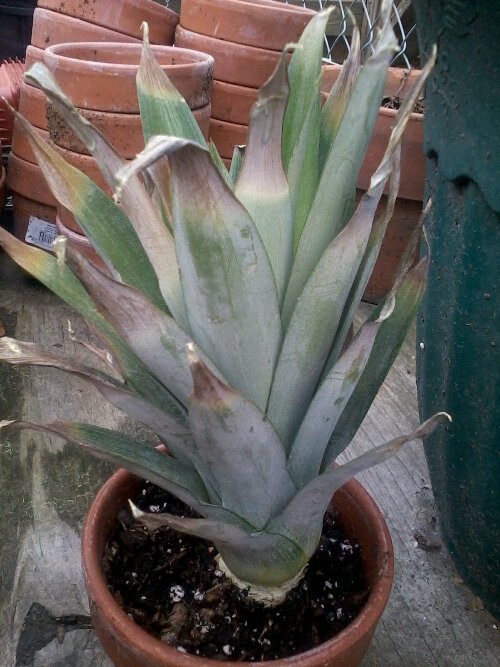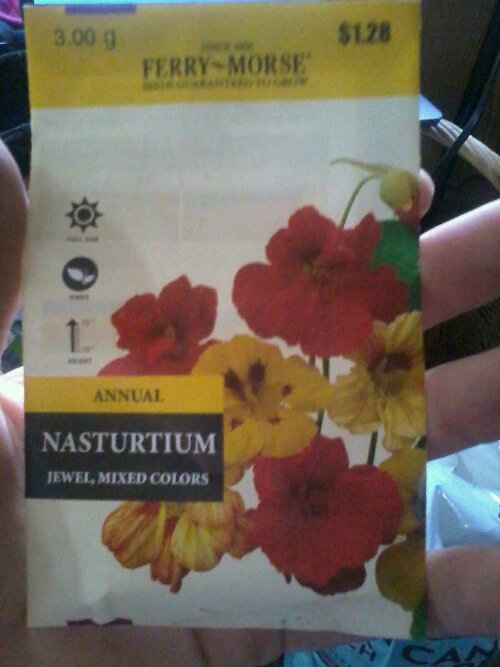There were some roots to battle but like most ponds mine started with digging a hole.
The hole was then lined with cardboard boxes taken from a store dumpster, a blue tarp found along the side of the road, and finally a pond liner. The liner is part of a poond kit I bought on clearance over the winter. The fake lilypads were part of the kit as well. I also added a small formed plastic part to help form a small waterfall. Shallow areas got a thin layer of pebbles.
I added plants and fish soon after that. There are some real lilypads in the deep area. The more shallow areas got a mix of pond plants and plants usually used in aquariums. Within a day of adding the first plants a toad came in and laid eggs. You can tell they are from a toad, not a frog, because the eggs are laid in a chain instead of a cluster.
Less than a week later thousands of tiny tadpoles hatched.
I found a swamp hibiscus at a local nursery and added it to the edge of the pond as well. One of the secrets to a successful system is having a balance of fish and plants. The plants use the fish wastes which keeps algae overgrowth from becoming a problem.
Since this is a garden feature, as well as a place to grow fish, I am aranging stone around the waterfall. It isn’t completely pretty yet and you can see all of the stuff that makes it run. There are 2 solar powered water pumps and a solar powered air pump. The small solar pannels can be seen sitting on te rocks around the waterfall area. I would like to buy a bigger solar pannel and put a battery in to store the energy so the pond will circulate at night but it is fine for now. The real secret to keeping water oxygenated enough for fish is to have a large surface to volume ratio. That is part of the reason for the large shallow areas in the pond. These areas also give space for shallow water plants to live with just their toes in the water and a safe, warm area for baby fish and tadpoles to hang out.
These are not the fish in my pond, but the grown up version of one species. These golden talapia are a great food fish and capable of surviving a variety of water conditions. I have several babies in the 1-2″ size range (I think there are 7) in my pond. I have also added tropical fish including paradise fish, white skirt tetras, black fin neons, and tiger barbs. The tropical fish will thrive and breed over the summer but when cooler weather gets here I will have to either set up an indoor aquarium, adda a heater to the pond, or sell the originals and their offspring to a fish store. Most tropicals will thrive but eat less during the winter with water temperatures as low as the mid-low 60s. They will slow growth and eat less in cooler conditions so expect that if over wintering tropical fish in an outdoor pond. Temps much below that will kill most tropicals so there does need to be a plan for their safe keeping.
I am still waiting for the lilypads and other plants purchased dormant to grow but the rest of the stones are in place around the edge. I will tweek things a little, especially around the waterfall but for now it is complete. I’m sure I will add more plants and maybe try growing lettuce floating around on top or some other such craziness but I am already enjoying my little pond. It is both an attractive garden feature and a place to grow fish for both food and sale in the aquarium trade. Total for supplies, including pond kit with liner, waterfall liner, water pumps, air pump, stones, plants and fish is less than $200. This is because I buy things on sale or clearance. The pond is about 5’x8′ and 3′ or so deep in the center. It is home to a variety of life already and I can’t wait to see how it changes as nature works its wonders.

























































